Check out String Theory’s portfolio page for a complete overview of the game!
Welcome back to another String Theory update post. It has been a wild ride, but we made it! I am incredibly proud of my team and all the hard work they and I have put into making String Theory what it is today. Before we start with the updates, here are some of my favorite gifs from the current gameplay demo:
Doceratops Studios – Onboarding
One of the many exciting updates that happened since my previous blog post on String Theory was the onboarding that took place after midmortems. With the end of midmortems came the adoption of five new team members:
- Oliver Patric as a Character Artist.
- Bryan Richardson as an Assistant Producer.
- Lauren Ritze as a UI/UX and Sound Designer.
- James Smith as an AI/Gameplay Programmer.
- Julianna Zegarelli as a Level Designer.
New Mechanics
With more members, we were able to add systems and mechanics more quickly. Our excellent level designers started pumping out new levels, including a final boss battle and tutorial. Our artists began making cool assets like the outer cave walls, buildings, and enemy models. All while James and I, the programmers, started implementing new gameplay mechanics like moving platforms, pulling over scaffolding, aim-assist, and framework code for the music, sound, and scene management.
Updated Grappling Mechanics
One of the new systems implemented into String Theory is the ability to grapple moving platforms and scaffolding. Below shows a gif of how moving platforms work. Standing on one end and grappling the hook on the other, activates the platform and moves the player towards the other side.
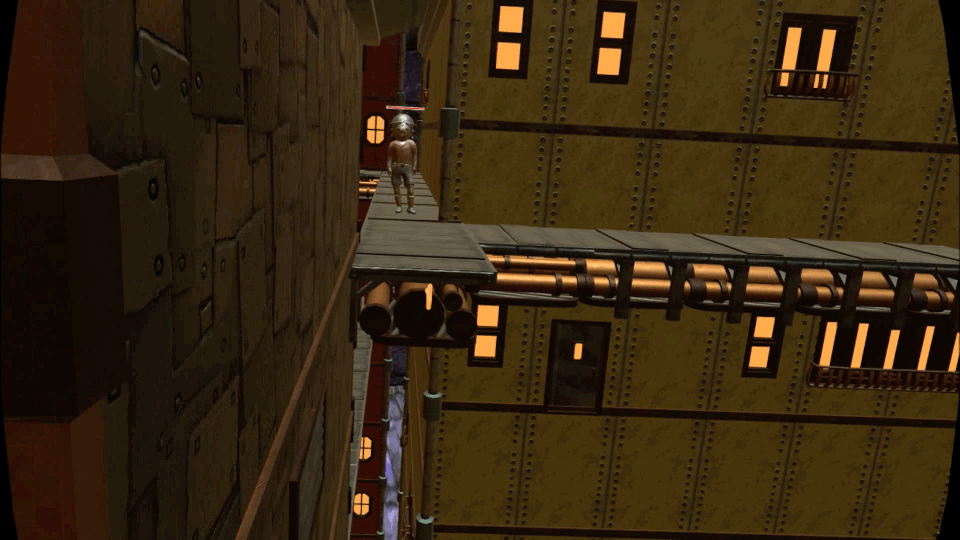
To knock over scaffolding, the player can grapple onto it and pull it over. When it falls, the scaffolding will wipe out all of the enemies underneath it! Below shows a gif of how the falling scaffolding works.
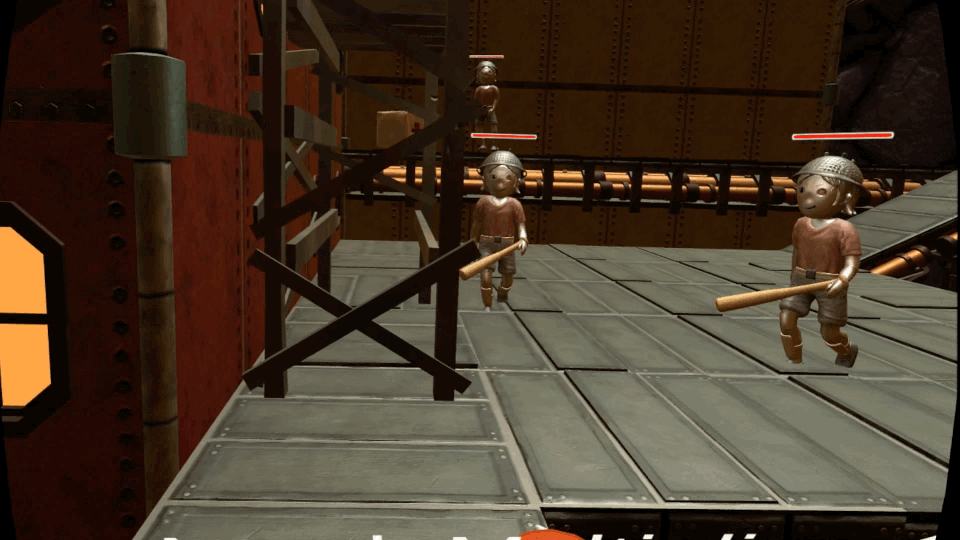
In addition to helping develop and bugfix the above mechanics, I mainly focused on the following systems/mechanics:
Aim Assist
Swinging a yoyo around in VR is exciting, but aiming can be hard for some players. To remedy that, aim assist was born! As you can see in the gif below, it looks like the player has perfect aim when hitting that button, when in fact they are getting a little help from the aim assist. It’s all about game feel and while we want the game to stay fairly skill-based, it becomes frustrating for a player when they can’t hit anything.
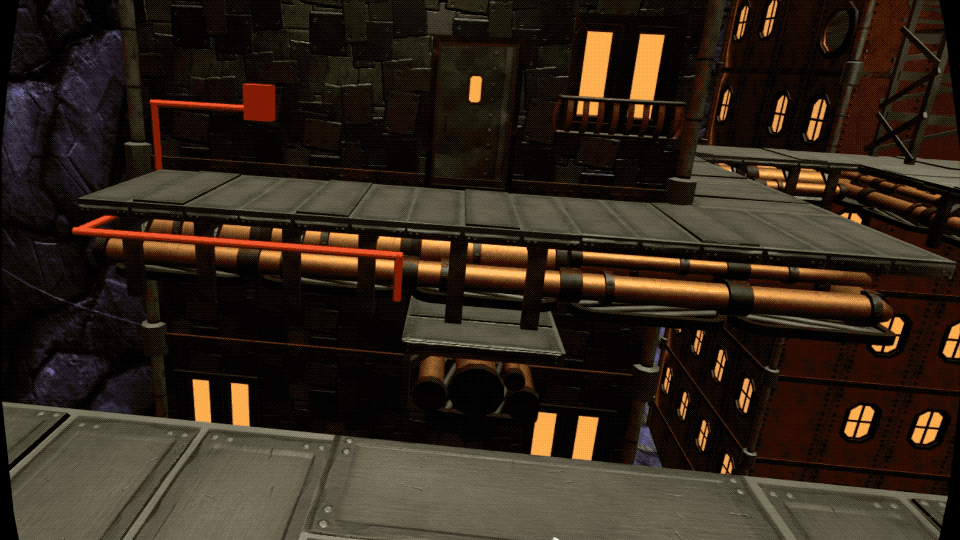
I designed aim assist by projecting the yoyo out to the position it would initially go when thrown, and then the yoyo checks all objects in a certain radius and finds a list of “aim assist enabled” objects. Once we have the list of “aim assist enabled” objects, we take the closest one and remap the yoyo’s target location to it. Designers can add aim assist to any object in the scene, and also have the ability to individually adjust how wide of a radius the assist covers while testing the game.
Music and Sound Management
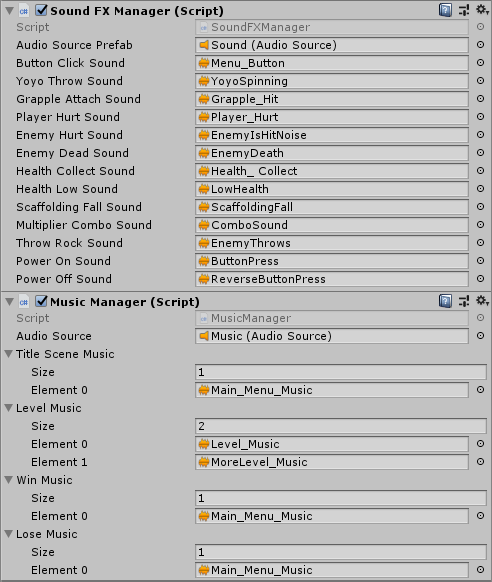
Working on the framework for music and sound was one of my favorite systems to code in String Theory. The framework provides an easy to use interface for our sound designer, Lauren, to quickly test different sounds and music for critical events that happen in the game. I worked closely with Lauren to make sure the tool provided all of the features necessary for her. To the right, is an image showing how anyone can freely drag and drop sounds into the desired slot to change the music or sound in String Theory.
Scene Management
I wanted a way to navigate between scenes in String Theory easily, and a centralized framework to take care of event throwing for when the game was supposed to change scenes. To solve these problems, I created a scene manager that supports cross scene persistence, event firing which is used in the music manager to alter music, and fading out between scenes to provide smooth transitions.
Beta Gameplay Trailer
Reading about all of these new changes might sound neat, but seeing it in action is even cooler. Here is String Theory’s beta gameplay trailer:
Closing Remarks
With Production II coming to a close and String Theory entering Beta, I can say I am incredibly proud of my team, and everyone’s hard work. Like I said in my previous blog post on String Theory, Production II is an extremely dynamic and exciting game development course. The experience I have gained has helped me better my communication, productivity, and teamwork skills tremendously, in addition to making sure I manage my time more efficiently. Overall, the team and I have poured our hearts and souls into this game, and I am excited to see what the future holds.
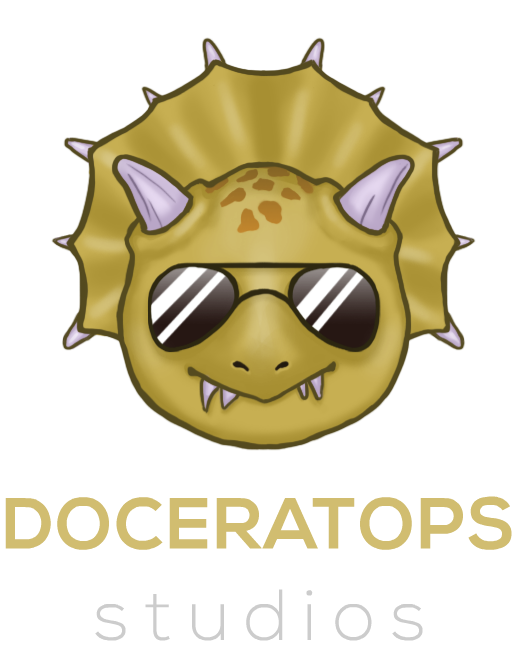








Leave a Comment